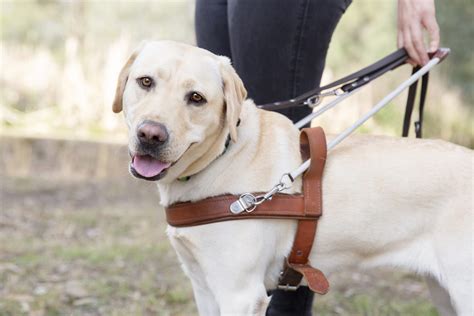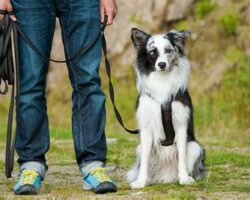Discover the benefits of using dog training harnesses for positive reinforcement techniques, improved control, and building a stronger bond with your dog. Learn how to choose, fit, and prevent injuries.
Understanding Dog Training Harnesses
When it comes to training your dog, using a dog training harness can be an effective tool in helping to control and communicate with your furry friend. Unlike traditional collars, harnesses distribute pressure more evenly across the dog’s body, reducing the risk of injury or strain. They also provide a greater level of control, making them an excellent option for dogs that pull on the leash or have difficulty with obedience.
There are different types of dog training harnesses available, each designed to serve a specific purpose. From front-clip harnesses that discourage pulling to no-pull harnesses with a back-clip, it’s important to understand the function of each type to choose the right one for your dog. Additionally, proper fitting and adjustments are crucial to ensure your dog’s comfort and safety while using a harness.
By understanding the benefits and purpose of dog training harnesses, pet owners can make an informed decision on whether this tool is suitable for their dog’s training needs. With the right harness and positive reinforcement techniques, you can build a stronger bond and improve communication with your canine companion.
Choosing the Right Harness for Your Dog
When it comes to choosing the right harness for your dog, it’s important to consider the specific needs and behaviors of your furry friend. Dogs come in all shapes and sizes, so a harness that works for one dog may not necessarily work for another. Take into account your dog’s breed, size, and activity level when selecting a harness.
Another important factor to consider when choosing a harness for your dog is the style of the harness. There are several different styles to choose from, including step-in harnesses, overhead harnesses, and vest harnesses. Each style has its own benefits and drawbacks, so it’s important to choose the one that will be most comfortable and effective for your dog.
Finally, it’s crucial to ensure that the harness fits properly and can be adjusted for your dog’s comfort. A properly fitted harness will prevent chafing and discomfort, and will allow for proper communication and control during training sessions. Be sure to measure your dog’s chest and neck circumference to ensure that the harness will fit correctly, and look for a harness with adjustable straps for a customized fit.
Proper Fitting and Adjustments for Comfort
Proper Fitting and Adjustments for Comfort
When it comes to training your dog and using a harness, one of the most important factors to consider is the proper fitting and adjustments for comfort. The harness should fit snugly, without being too tight or restrictive. It’s essential to measure your dog’s chest and neck to ensure the harness is the right size. Making sure the harness is properly adjusted will prevent chafing and discomfort for your furry friend.
Another important aspect of proper fitting and adjustments is to ensure the harness is positioned correctly on your dog’s body. The harness should sit high on the chest and back to provide the most control and comfort. It’s also important to check the fit regularly, as your dog may grow or lose weight over time, requiring adjustments to the harness. Taking the time to properly fit and adjust the harness will ensure your dog can move comfortably while training and prevent any potential injury or strain.
Comfort is key when it comes to choosing and fitting a harness for your dog. Look for harnesses with padded straps and breathable materials to ensure your dog can wear it for extended periods without discomfort. Proper fitting and adjustments will not only make training more enjoyable for your dog, but it will also strengthen the bond between you and your furry companion.
Training with Positive Reinforcement Techniques
Dog training can be a fun and rewarding experience for both you and your furry friend. One effective method of training is using positive reinforcement techniques. This involves rewarding your dog with treats, praise, or toys when they exhibit the desired behavior. By focusing on rewarding good behavior, rather than punishing bad behavior, you can build a strong bond with your dog and create a positive training environment.
Positive reinforcement techniques can be used in a variety of training scenarios, such as obedience training, agility training, and even behavior modification. Whether you’re teaching your dog to sit, stay, or come when called, using positive reinforcement can help them learn more quickly and enjoy the process. It’s important to be consistent with your rewards and use them immediately after the desired behavior occurs, so your dog can make the connection between their actions and the reward.
When training with positive reinforcement techniques, it’s important to consider your dog’s individual personality and preferences. Some dogs may be motivated by food rewards, while others may prefer praise or play. By understanding what motivates your dog, you can tailor your training approach to be most effective for them. Additionally, it’s important to set clear expectations and communicate effectively with your dog, so they understand what behavior is being rewarded.
Improving Control and Communication with Your Dog
Improving Control and Communication with Your Dog
When it comes to training your dog, one of the most important aspects to focus on is improving control and communication. By using the right training harness, you can effectively communicate with your dog and establish clear control over their movements and behavior. This is essential for creating a strong and reliable bond with your pet.
Using a positive reinforcement approach, you can teach your dog to respond to your commands and cues while wearing their harness. This method focuses on rewarding good behavior rather than punishing bad behavior, which ultimately strengthens the communication between you and your pet. By consistently reinforcing positive behavior, your dog will learn to trust and rely on your guidance.
It’s important to choose a harness that fits comfortably and securely on your dog. Proper fitting and adjustments are crucial for ensuring that your pet is not only safe, but also feels at ease while wearing the harness. When your dog is comfortable, they are more likely to respond positively to your cues and commands, allowing for improved control and communication during training sessions and daily interactions.
Preventing Injuries and Strain on Your Dog
Preventing Injuries and Strain on Your Dog
Choosing the right dog training harness is essential to ensure that your furry friend is protected from any potential injuries or strain during training sessions. It is important to select a harness that is designed to distribute the force of your dog’s movements evenly across their body, thereby reducing the risk of strain or injury.
Proper fitting and adjustments are also crucial when it comes to preventing injuries and strain on your dog. A harness that is too tight can cause discomfort and restrict your dog’s movement, while a loose harness may result in chafing and rubbing, leading to potential injuries. By ensuring that the harness fits properly and making regular adjustments as needed, you can minimize the risk of strain and discomfort for your canine companion.
Training with positive reinforcement techniques can also help prevent injuries and strain on your dog. By using positive reinforcement methods, you can effectively communicate with your dog, building trust and confidence that can reduce the likelihood of your dog pulling or lunging while on a harness. This not only prevents strain on your dog’s body, but also strengthens your bond and improves communication between you and your furry friend.
Building a Stronger Bond Through Harness Training
Building a strong bond with your dog is essential for a happy and healthy relationship. One way to strengthen that bond is through harness training. Harness training not only provides a comfortable and safe way to control your dog, but it also allows for better communication and understanding between you and your furry friend. By using the right techniques and positive reinforcement, harness training can improve the trust and connection you have with your dog.
When you use a harness to train your dog, you are not only teaching them to walk calmly by your side, but you are also showing them that you are their protector and guide. The act of putting on the harness can become a positive and bonding experience, as your dog learns to trust you and rely on you for their safety and comfort. This can help to build a stronger bond and sense of partnership between you and your dog.
Additionally, harness training can also provide an opportunity for physical closeness and bonding. As you guide your dog through training exercises, you are working together towards a common goal, which can create a sense of teamwork and unity. This can help to improve your communication with your dog and strengthen the bond you share. By using harness training as a tool for positive reinforcement and building trust, you can create a stronger and more fulfilling relationship with your canine companion.
Frequently Asked Questions
What are the benefits of using a dog training harness?
Dog training harnesses provide better control and comfort for both the owner and the dog, especially when compared to traditional collars.
How does a dog training harness improve control?
A dog training harness disperses the pulling force across the dog’s chest and back, giving the owner more control and reducing the risk of injury to the dog’s neck.
Can a dog training harness help with leash training?
Yes, a dog training harness can help with leash training by minimizing pulling and encouraging the dog to walk beside its owner.
Are there different types of dog training harnesses available?
Yes, there are various types of dog training harnesses, including front-clip, back-clip, and dual-clip harnesses, each suited to different training needs.
Can all dogs benefit from using a training harness?
While most dogs can benefit from using a training harness, it’s important to choose the right type and size of harness based on the dog’s breed and behavior.
What should I look for when buying a dog training harness?
When buying a dog training harness, look for a comfortable fit, durable material, and adjustable straps to ensure the best training experience for both the owner and the dog.
Are there any potential drawbacks to using a dog training harness?
Some dogs may initially resist wearing a harness, and improper fitting or use of the harness can lead to discomfort or chafing. Proper introduction and fitting are key to avoiding these issues.





